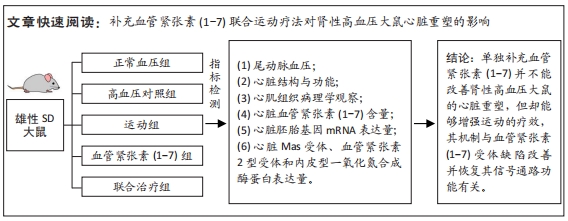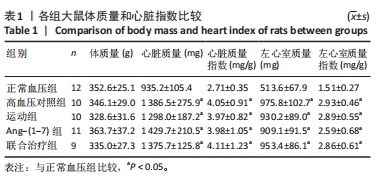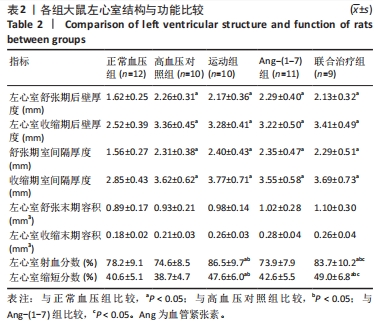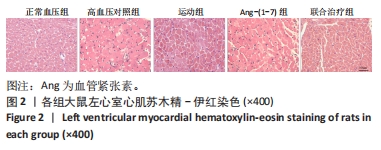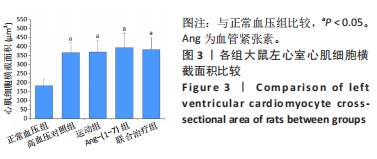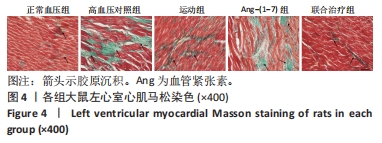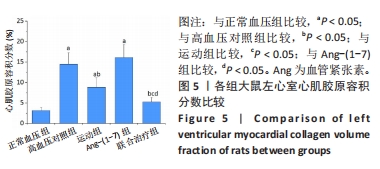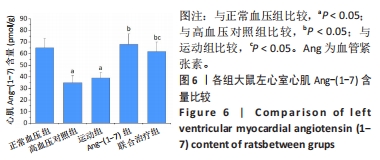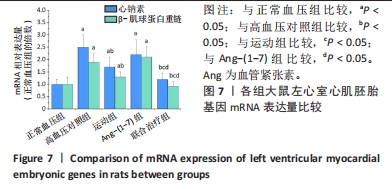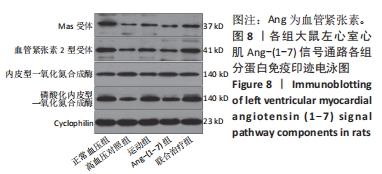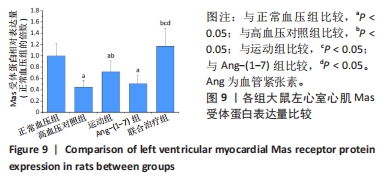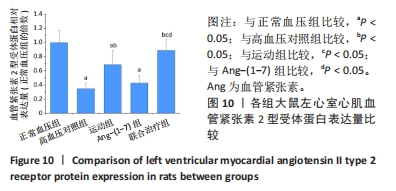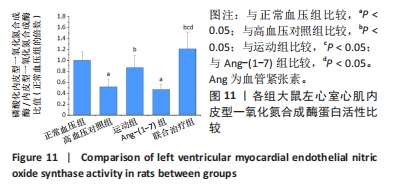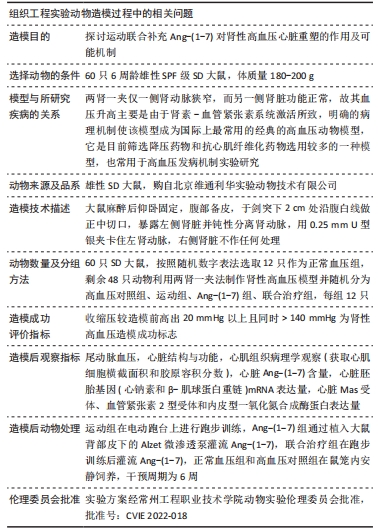[1] JEPSON A, DANFORD D, CRAMER JW, et al. Assessment of hypertension, guideline-directed counseling, and outcomes in the ACHD population. Pediatr Cardiol. 2022;43(7):1615-1623.
[2] GONZáLEZ A, RAVASSA S, LóPEZ B, et al. Myocardial remodeling in hypertension. Hypertension. 2018;72(3):549-558.
[3] PRIETO MC, GONZALEZ AA, VISNIAUSKAS B, et al. The evolving complexity of the collecting duct renin-angiotensin system in hypertension. Nat Rev Nephrol. 2021;17(7):481-492.
[4] VARAGIC J, FROHLICH ED. Local cardiac renin-angiotensin system: hypertension and cardiac failure. J Mol Cell Cardiol. 2002;34(11):1435-1442.
[5] SANTOS R, OUDIT GY, VERANO-BRAGA T, et al. The renin-angiotensin system: going beyond the classical paradigms. Am J Physiol Heart Circ Physiol. 2019; 316(5):H958-H970.
[6] SANTOS R, SAMPAIO WO, ALZAMORA AC, et al. The ACE2/angiotensin-(1-7)/Mas axis of the renin-angiotensin system: focus on angiotensin-(1-7). Physiol Rev. 2018;98(1):505-553.
[7] O’NEILL J, HEALY V, JOHNS EJ. Intrarenal Mas and AT1 receptors play a role in mediating the excretory actions of renal interstitial angiotensin-(1-7) infusion in anaesthetized rats. Exp Physiol. 2017;102(12):1700-1715.
[8] PEI Z, MENG R, LI G, et al. Angiotensin-(1-7) ameliorates myocardial remodeling and interstitial fibrosis in spontaneous hypertension: role of MMPs/TIMPs. Toxicol Lett. 2010;199(2):173-181.
[9] GIANI JF, MAYER MA, MUñOZ MC, et al. Chronic infusion of angiotensin-(1-7) improves insulin resistance and hypertension induced by a high-fructose diet in rats. Am J Physiol Endocrinol Metab. 2009;296(2):E262-E271.
[10] BüRGELOVá M, VANOURKOVá Z, THUMOVá M, et al. Impairment of the angiotensin-converting enzyme 2-angiotensin-(1-7)-Mas axis contributes to the acceleration of two-kidney, one-clip Goldblatt hypertension. J Hypertens. 2009;27(10):1988-2000.
[11] COUTINHO D, JOVIANO-SANTOS JV, SANTOS-MIRANDA A, et al. Altered heart cytokine profile and action potential modulation in cardiomyocytes from Mas-deficient mice. Biochem Biophys Res Commun. 2022;619:90-96.
[12] PATEL VB, MORI J, MCLEAN BA, et al. ACE2 deficiency worsens epicardial adipose tissue inflammation and cardiac dysfunction in response to diet-induced obesity. Diabetes. 2016;65(1):85-95.
[13] COLLISTER JP, NAHEY DB. Simultaneous administration of Ang(1-7) or A-779 does not affect the chronic hypertensive effects of angiotensin II in normal rats. J Renin Angiotensin Aldosterone Syst. 2010;11(2):99-102.
[14] STUIJ M, ELLING A, ABMA T. Negotiating exercise as medicine: Narratives from people with type 2 diabetes. Health (London). 2021;25(1):86-102.
[15] GRONEK P, WIELINSKI D, CYGANSKI P, et al. A Review of Exercise as Medicine in Cardiovascular Disease: Pathology and Mechanism. Aging Dis. 2020;11(2):327-340.
[16] PATTI A, MERLO L, AMBROSETTI M, et al. Exercise-based cardiac rehabilitation programs in heart failure patients. Heart Fail Clin. 2021;17(2):263-271.
[17] 朱政, 付常喜, 马文超, 等. 有氧运动调控自发性高血压模型大鼠心脏重塑的机制[J]. 中国组织工程研究,2022,26(14):2231-2237.
[18] FILHO AG, FERREIRA AJ, SANTOS SH, et al. Selective increase of angiotensin(1-7) and its receptor in hearts of spontaneously hypertensive rats subjected to physical training. Exp Physiol. 2008;93(5):589-598.
[19] FRANCHI F, KNUDSEN BE, OEHLER E, et al. Non-invasive assessment of cardiac function in a mouse model of renovascular hypertension. Hypertens Res. 2013; 36(9):770-775.
[20] ROSA RM, COLUCCI JA, YOKOTA R, et al. Alternative pathways for angiotensin II production as an important determinant of kidney damage in endotoxemia. Am J Physiol Renal Physiol. 2016;311(3):F496-F504.
[21] 黄红梅, 胡宗祥, 刘昭强, 等. 长期高强度间歇训练加重自发性高血压大鼠心肌纤维化[J]. 中国运动医学杂志,2020,39(8):615-625.
[22] 袁国强, 秦永生, 彭朋. 高强度间歇运动对自发性高血压模型大鼠病理性心脏肥大的影响及机制[J]. 中国组织工程研究,2020, 24(23):3708-3715.
[23] 袁国强, 秦永生, 彭朋. 有氧运动对自发性高血压大鼠心肌纤维化的影响及机制[J]. 天津医药,2020,48(2):100-104.
[24] 范朋琦, 秦永生, 彭朋. 不同运动方式对自发性高血压大鼠心脏重塑和运动能力的影响[J]. 现代预防医学,2018,45(23):4341-4345,4351.
[25] PEDDI NC, MARASANDRA RAMESH H, GUDE SS, et al. Intrauterine fetal gene therapy: is that the future and is that future now. Cureus. 2022;14(2):e22521.
[26] FRANGOGIANNIS NG. Cardiac fibrosis. Cardiovasc Res. 2021;117(6):1450-1488.
[27] XI Y, HAO M, LIANG Q, et al. Dynamic resistance exercise increases skeletal muscle-derived FSTL1 inducing cardiac angiogenesis via DIP2A-Smad2/3 in rats following myocardial infarction. J Sport Health Sci. 2021;10(5):594-603.
[28] GATI S, MALHOTRA A, SHARMA S. Exercise recommendations in patients with valvular heart disease. Heart. 2019;105(2):106-110.
[29] HEIDARI B, ZOLFAGHARI MR, KHADEMVATANI K, et al. Interrelation among exercise training, cardiac hypertrophy, and tissue kallikrein-kinin system in athlete and non-athlete women. J Cardiovasc Thorac Res. 2022;14(3):159-165.
[30] WANG J, HE W, GUO L, et al. The ACE2-Ang (1-7)-Mas receptor axis attenuates cardiac remodeling and fibrosis in post-myocardial infarction. Mol Med Rep. 2017;16(2):1973-1981.
[31] KANGUSSU LM, GUIMARAES PS, NADU AP, et al. Activation of angiotensin-(1-7)/Mas axis in the brain lowers blood pressure and attenuates cardiac remodeling in hypertensive transgenic (mRen2)27 rats. Neuropharmacology. 2015;97:58-66.
[32] 杨吕, 黄煜, 何庆. 调控血管紧张素转化酶2-血管紧张素(1-7)-Mas轴是心脏重构和心力衰竭治疗的新靶点[J]. 中华危重病急救医学,2019,31(11):1425-1428.
[33] BOISSIERE J, EDER V, MACHET MC, et al. Moderate exercise training does not worsen left ventricle remodeling and function in untreated severe hypertensive rats. J Appl Physiol (1985). 2008;104(2):321-327.
[34] AENGEVAEREN VL, BAGGISH AL, CHUNG EH, et al. Exercise-induced cardiac troponin elevations: from underlying mechanisms to clinical relevance. Circulation. 2021;144(24):1955-1972.
[35] PANDORF CE, HADDAD F, OWERKOWICZ T, et al. Regulation of myosin heavy chain antisense long noncoding RNA in human vastus lateralis in response to exercise training. Am J Physiol Cell Physiol. 2020;318(5):C931-C942.
[36] COSTA MA, LOPEZ VERRILLI MA, GOMEZ KA, et al. Angiotensin-(1-7) upregulates cardiac nitric oxide synthase in spontaneously hypertensive rats. Am J Physiol Heart Circ Physiol. 2010;299(4): H1205-H1211.
[37] LOUGHLIN JM, BROWNE L, HINCHION J. The impact of exogenous nitric oxide during cardiopulmonary bypass for cardiac surgery. Perfusion. 2022;37(7):656-667.
[38] TIWARI P, TIWARI V, GUPTA S, et al. Activation of Angiotensin-converting enzyme 2 protects against lipopolysaccharide-induced glial activation by modulating angiotensin-converting enzyme 2/angiotensin (1-7)/Mas receptor axis. Mol Neurobiol. 2023;60(1):203-227.
|
